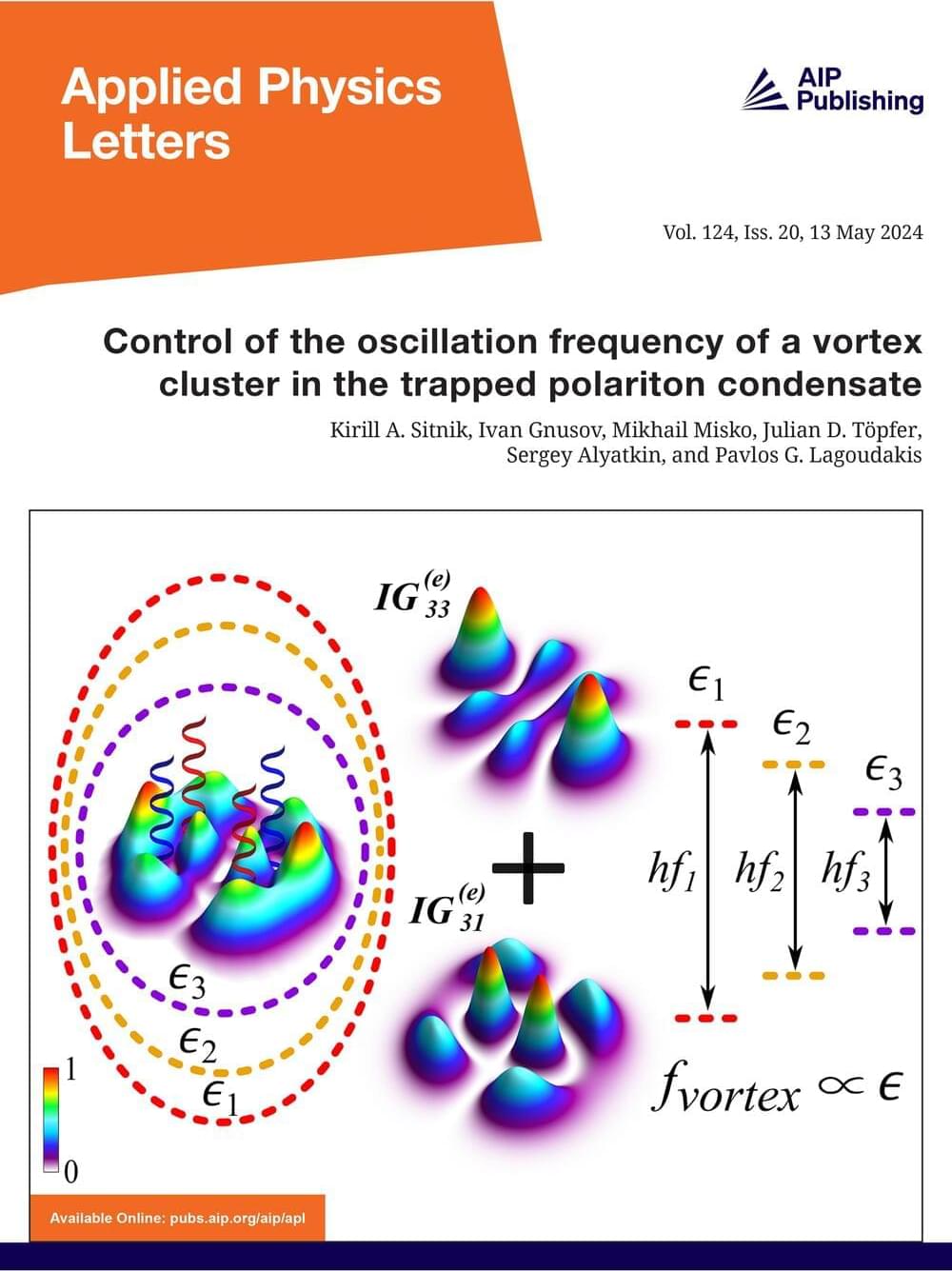A group of scientists from Skoltech, led by Skoltech Vice President for Photonics Pavlos Lagoudakis, a laureate of the Vyzov (Challenge) prize, shared new results of the polariton condensate research. The team demonstrated that under optical excitation a polariton condensate can simultaneously occupy two closely spaced energy levels, which results in the formation of quantized vortex clusters. The outcomes of the study are prominent for optical tweezers, increasing the width of the data transmission channel in optical communication lines, and in other research areas. The paper was published in the Applied Physics Letters journal. It was featured on the cover of the weekly issue.
The new study is based on the previous work on optical vortices — optical beams that have their phase twisted in a spiral around the propagation axis. In 2022, Skoltech researchers, together with their colleagues from the University of Iceland and the University of Southampton, were the first to show how a cluster of quantized vortices with periodically flipping charges is formed in polariton condensates. The authors experimentally observed a cluster of four vortices and detected periodic flips of the signs of their charges with an interval of one fifth of a nanosecond.
“Polaritons are quasi-particles consisting of light and matter. They can form a macroscopic coherent state — Bose-Einstein condensate. This state behaves, roughly speaking, like one particle and is described by a single wave function. But the condensation of polaritons in inorganic microresonators is achieved not at room temperature, but at extremely low ones, therefore, to observe the condensation of polaritons, we place the sample in which they appear in a cryostat, where it is cooled to four degrees Kelvin,” says Kirill Sitnik, the first author of the study, a junior research scientist at the Skoltech Photonics Center’s Laboratory of Hybrid Photonics.
